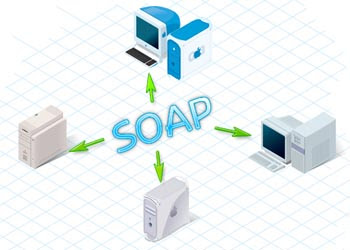8 Cloud Computing Skills High In Demand Right Now
IT industry has evolved in to a very competitive world and complies with “Survival Of Fittest” theory. Here, the employees always have to keep up their ante with new skills. And mostly the industry keeps tabs on the ways to reduce costs, boost productivity and tap the power of complex datasets to gain market insight, and put it in nut shell, Cloud computing offers all this and more. As a result, IT professionals who evolve can take advantage of the cloud growth.
According to Gartner’s Forecast Overview, companies spent $110.3 billion in 2012 on cloud services and the number is expected to grow through 2016.
“End-user spending on public cloud services is expected to grow 18.6% in 2012 to $110.3 billion and is expected to record a compound annual growth rate of 17.7 percent from 2011 through 2016,”.
In wake of such hour, CIO spoke with Howard B. Medow, vice president of strategic sales and delivery with Modis to list the following 8 cloud skills that are high in demand right now.
1. HADOOP
Hadoop skills topped the list at 25 percent, for the biggest expected demand for data analytics professionals for the upcoming year. The Companies are using Hadoop to handle and sift through thousands of data points from disparate sources and systems.
Apache Hadoop (High-availability distributed object-oriented platform) is an open-source software framework that supports data-intensive distributed applications, licensed under the Apache v2 license. It is a big player in the enterprise and is virtually synonymous with big data. It supports the running of applications on large clusters of commodity hardware. It enables applications to work with thousands of computation-independent computers and petabytes of data. Hadoop was derived from Google’s MapReduce and Google File System (GFS) papers.
2. SOAP
SOAP can form the foundation layer of a web services protocol stack, providing a basic messaging framework upon which web services can be built.
SOAP (Simple Object Access Protocol), is a protocol specification for exchanging structured information in the implementation of Web Services in computer networks. It relies on XML Information Set for its message format, and usually relies on other Application Layer protocols, most notably Hypertext Transfer Protocol (HTTP) or Simple Mail Transfer Protocol (SMTP), for message negotiation and transmission.
3.PYTHON
Python is a widely used general-purpose, high-level programming language. Its design philosophy emphasizes code readability, and its syntax allows programmers to express concepts in fewer lines of code than would be possible in languages such as C. The language provides constructs intended to enable clear programs on both a small and large scale. Python is used by players as notable as Google and NASA. It’s also what Dropbox is written in. In fact, the technology is so important to Dropbox that the company hired Python author Guido van Rossum away from Google late last year.
4.RUBY
It was also influenced by Eiffel and Lisp. And it supports multiple programming paradigms, including functional, object oriented and imperative. It also has a dynamic type system and automatic memory management; it is therefore similar in varying respects to Smalltalk, Python, Perl, Lisp, Dylan, and CLU.
5.PERL
The Perl languages borrow features from other programming languages including C, shell scripting (sh), AWK, and sed. They provide powerful text processing facilities without the arbitrary data-length limits of many contemporary Unix tools, facilitating easy manipulation of text files.
Perl is a family of high-level, general-purpose, interpreted, dynamic programming languages. Perl was very popular in the 90s for its ability to create CGI scripts that beefed up the functionality of early Web pages. In addition to Web development.
6.PHP
PHP is a server-side scripting language designed for web development but also used as a general-purpose programming language. The open source, server-side scripting language runs on more than 20 million websites and powers high-profile sites we deal with every day, including Facebook and Wikipedia.
7..NET/Java
JavaScript is an interpreted computer programming language. It was originally implemented as part of web browsers so that client-side scripts could interact with the user, control the browser, communicate asynchronously, and alter the document content that was displayed.
ASP.NET is a server-side Web application framework designed for Web development to produce dynamic Web pages. It was developed by Microsoft to allow programmers to build dynamic web sites, web applications and web services.
8.STORAGE ENGINEERING
Storage engineers are responsible for installing and configuring the storage system. Their responsibilities include, designing installations and configurations for Network Attached Storage (NAS), Storage Area Networks (SAN), backup/recovery servers, tape library management software, and archive and retrieval systems management software. The concept of cloud storage has opened up new opportunities and with them, new responsibilities for the storage engineers.











